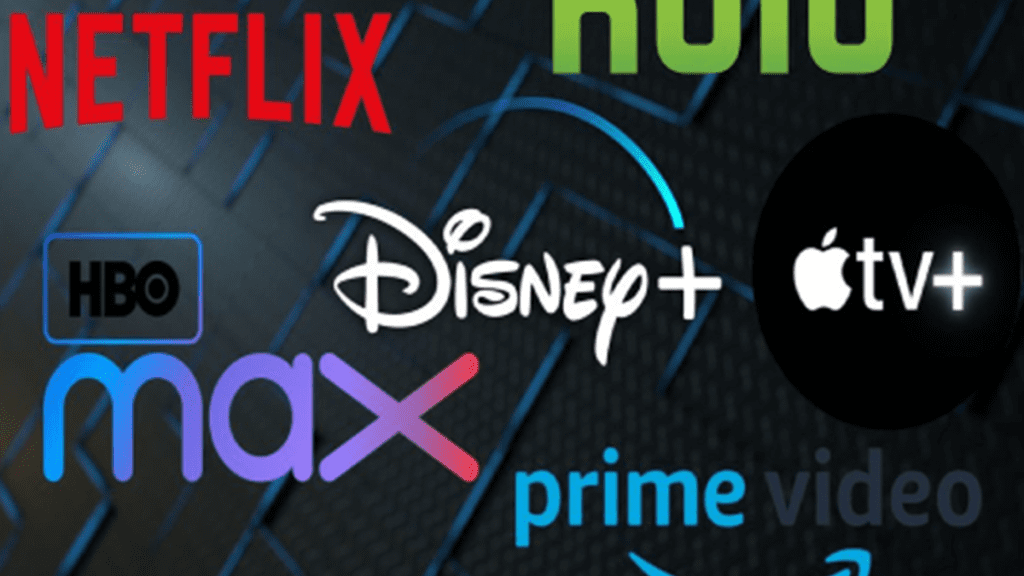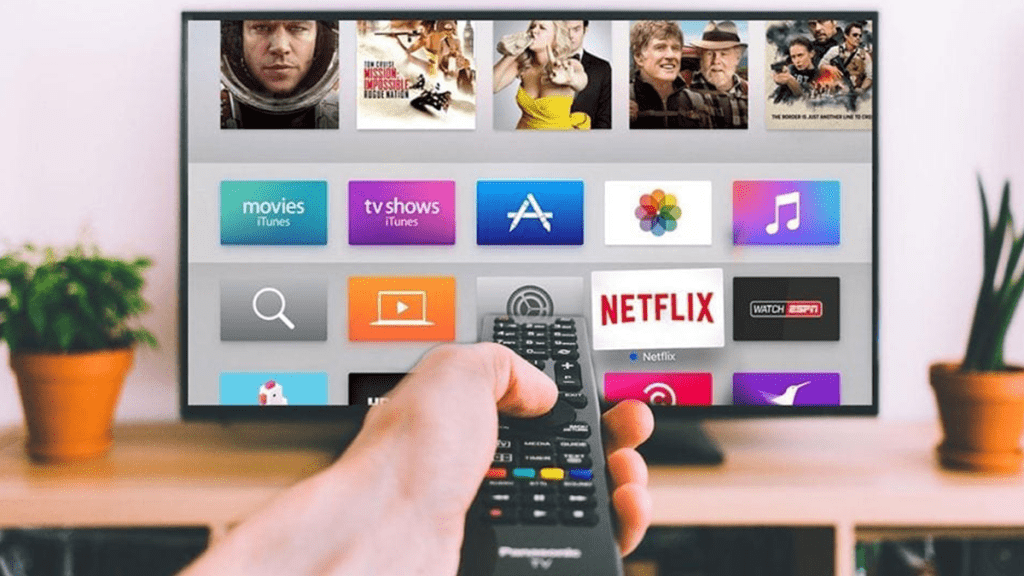The over-the-top (OTT) sector is expanding. Except for online video, every aspect of home entertainment spending has decreased in the last five years.
Video streaming, for example, increased by 72.4 percent between Q1 2018 and Q1 2019.
Similarly, 12 percent of cable subscribers in the United States “cut the cord” in 2018.
By the end of this year, it is projected that up to 27% of American households would have cut the cord.
The OTT sector is huge, and it’s just becoming bigger. Let’s take a look at some recent OTT developments as well as some OTT trends to keep an eye on this year.
What is OTT and why is it relevant?
As we approach 2022, the OTT industry is more relevant than ever.
OTT stands for “over-the-top,” and it refers to internet-based media distribution.
Today, IP networks are distributing an increasing amount of media. In fact, several industry professionals argue that the distinction between OTT and conventional TV should be abolished entirely.
We are currently facing a future in which all television is distributed via over-the-top (OTT).
The OTT sector is in the process of maturing. We’re in the midst of a period when the technology that underpins OTT trends is settling down.
The technologies that support VOD and live streaming are getting more stable and reliable. Despite the fact that there aren’t many changes on the horizon, the sector is still evolving in terms of major players’ offers and the services they provide.

In no particular order, here are the top OTT trends in the media industry.
- OTT Continues To Get Bigger
In just a few short years, the OTT industry has experienced significant development and evolution. But we’re still so close to the beginning.
The business is expected to develop much more in the future years, according to experts. By 2027, the OTT market is anticipated to be valued $1.039 trillion.
This is a huge increase from the previous high of $121.61 billion.

- 5G and OTT
5G internet is becoming more common, particularly in urban areas. This next-generation cellular network technology will deliver significantly quicker and more stable internet rates. In tests, 5G is nearly 100 times faster than the fastest 4G LTE networks now available.
“Video streaming will be 5G’s killer app,” according to IHS Markit. The benefits will be particularly obvious in the case of video streaming. IHS expects that 5G will be a boost to live sports and event streaming. “When reduced latency is crucial, 5G’s benefits will be most noticeable.”
This tendency will be reflected in the success of OTT content publishers.
For example, if 5G provided higher video quality on mobile devices and reduced buffering, 29% of consumers would pay a premium.
However, there are some drawbacks to 5G to consider. Walls and other impediments, for example, can cause 5G signals to be disrupted. Carriers intend to get around this by deploying large networks of tiny network access points.
When 5G is unavailable, users can fall back to 4G LTE signals. Regardless, this technology will transform the entire industry.

- Immersive Streaming Technology Will Make Surfing Interactive
Streaming 4K video consumes roughly 30 MBPS of internet bandwidth, which is also tied to the latest OTT trends. You should have at least twice that amount of bandwidth available for live video streaming.
For consumer-grade internet connections, this is unusual. The emergence of 5G, on the other hand, will enable an explosion in streaming video quality by allowing for 4K streaming solutions.
The additional video bandwidth will allow 4K footage to be streamed. In the next 1-2 years, 4K and VR (Virtual Reality) streaming are expected to be distinguishing characteristics. With these new network connections, 360 live broadcasting will be considerably more possible. Overall, the streaming experience is about to become lot more immersive.
The advent of Facebook’s “Oculus” was a game-changer in the immersive streaming arena. Virtual reality consoles used to cost upwards of $2000. The Oculus Rift models, on the other hand, start at $299. Customers will be able to get their hands on one lot more easily as a result of this.
Virtual reality is currently the most popular technology among consumers, and it is progressively making its way into several businesses. As technology becomes more accessible, these patterns are expected to continue.

- Media Giants Will Stay Ahead
The premium over-the-top (OTT) market is witnessing some seismic changes. Netflix has finally begun to be challenged after numerous years at the top.
Disney+, HBO Go, and Peacock Premium were all launched last year by media behemoths Disney, HBO, and NBC, respectively. Furthermore, in the first 24 hours after its release, the Disney+ app was downloaded 3.2 million times.
Virtual reality is currently the most popular technology among consumers, and it is progressively making its way into several businesses. As technology becomes more accessible, these patterns are expected to continue.

- Innovations in OTT Monetization
More than a third of professional broadcasters, according to some estimates, commercialize their programmes through subscription models. However, this is having at least one negative impact on the OTT pricing market.
According to Apester’s global poll, 60.1 percent of respondents are sick of the abundance of streaming services. More than a fifth are unaware of new offerings, and only 16.5 percent believe that having so many competing services makes sense. “We’ve quickly reached a point of surplus options in the OTT market, both worldwide and locally,” said Varun Duggirala, The Glitch’s Content Chief and Co-Founder.
This current situation is known as “subscription fatigue,” and it is becoming more of an issue. 60 percent of adults in the United States watch subscription-based OTT video services on a daily basis. Simultaneously, many viewers have grown bored of paying for several services.
However, this is leading to further innovation in terms of OTT video monetization trends. Pay-per-view and advertising monetization are becoming more popular as alternatives to subscription monetization.
Bundling several subscription packages together to create channels may become more popular. Disney+ is already bundling their videos with ESPN, National Geographic, and other content companies. This will very certainly grow in popularity in the future.

- Rapid COVID-19 Growth Is Long-Term
In March 2020, the OTT business saw a sharp increase in consumption as people in the United States and Europe began to stay at home due to government-mandated lockdowns. After a few weeks, the increase levelled off.
Disney+ was one service that went out of its way to please its users by releasing movies on the platform ahead of schedule. Frozen II was a notable early release. The idea was that when more parents began working from home and no longer had access to traditional daycare, the release of this and other family-friendly films would give them some time.
Several OTT streaming series, including a few Netflix Originals, received unprecedented attention and viewership that they would not have received under normal conditions.
Tiger King, a contentious docuseries, is one such case. This is only one popular trend that would not have been as successful if individuals were not stranded at home. Other shows with new casts also had a lot of popularity.
Another noteworthy OTT trend that emerged from COVID-19 was the development of technology that enabled people to watch movies together via video chat. Users can stream in sync using these platforms. The goal was to bring people together even when it was safer to keep them apart physically.
- CTV Continues to Become More Popular
Connected TV, or “CTV” for short, refers to over-the-top (OTT) streaming on televisions. This has grown in popularity in the last year as viewers have begun to watch more content on television rather than on their mobile devices. Smart TVs, gaming consoles, and dedicated streaming devices make this possible.
Surprisingly, the rise in CTV streaming hasn’t resulted in a major drop in streaming on smartphones, tablets, or laptops. There has been a broad preference for mobile streaming for a few years, so it will be interesting to observe how this trend develops in the future.
Amazon’s Firestick, Roku, Apple TV, Xbox, PlayStation, and the Nintendo Switch are all popular options for CTV streaming.

- User Experience (UX) Will Be Key (Again)
The user experience has become critical to the success of OTT streaming services.
As previously said, a slew of media behemoths have recently launched OTT streaming services, causing subscriber weariness. Because there are so many platforms prepared to accept money from viewers, viewers have the power to pick and choose which services they want to use.
The success of platforms has been largely attributed to the user experience (UX). Viewers prefer to use streaming providers that have simple user interfaces. They also want the best content option.
When comparing Netflix and Hulu, for example, you’ll see that the Netflix interface is simple to use, appealing to the eye, and has a large selection of material. Both platforms have produced some fantastic films and television series, but Netflix does so on a much greater scale.
Netflix, on the whole, is more concerned with the user experience. Their algorithm is simple to use, and their apps are simple to use on most devices. Hulu’s platform, on the other hand, is a little clumsy. The search engine on the platform isn’t the best.
Hulu, on the other hand, has one benefit over Netflix. They release programmes only a few hours after they air live on television. Another important element to note is that Hulu broadcasts original shows in the same way that traditional television does, with one episode every week. The shows are “binge-able” because Netflix distributes entire seasons at a time.
Users prefer Netflix over Hulu, which is why Netflix is valued ten times as much as Hulu. Of course, these are just two of many streaming services available, but this fast comparison should give you a decent indication of what people consider important.

- Competition in the OTT Hosting Industry
Despite the fact that the OTT streaming industry is dominated by a few significant firms, new OTT streaming services continue to emerge. To operate at a professional level, these platforms require the assistance of online video platforms.
There are numerous certified OTT hosting solutions available at this time, including Dacast, Vimeo, Brightcove, and others. Cloud-based OTT hosting is also becoming a more inexpensive solution.
These systems are used by people who need help with content management and dissemination. Advanced security, video monetization, dependable content delivery, white-label streaming, and live streaming capabilities are all desirable qualities.
- Over-the-top (OTT) Content Fragmentation
Many broadcasters believe that fragmenting OTT streaming content adds value.
Content fragmentation will be another important OTT development in 2022.
Broadcasters and other content makers use content fragmentation to target specific audiences in the hopes of maximizing their performance. The notion is that if the content is carefully picked and strategically delivered, it will be more likely to reach the desired audience.
Gaia, an OTT platform dedicated to streaming “Conscious Media,” is an excellent example of this. This platform caters to people who are interested in spirituality, enlightenment, meditation, and yoga.
Creators that appeal to a “mindful” audience would most likely choose Gaia over other popular streaming platforms like Netflix or Hulu to publish their content. Broadcasters or creators of raunchy comedy or sitcoms, on the other hand, would certainly shun services like Gaia since their target audience would not be interested.

- Online Audio Streaming Will Rise
The way consumers consume audio content, such as talk shows and music, is about to change dramatically. The majority of audio streaming was done via terrestrial or satellite radio until recently. While traditional means of audio material dissemination are still in use, OTT audio streaming is becoming more popular.
Over the last decade, the number of individuals who listen to audio content, such as live streaming music and podcasts, on their smartphones and other digital devices has increased dramatically.
Only 9% of Americans over the age of 12 had listened to a podcast in 2008, but by 2021, that percentage had risen to 41%. The internet music streaming sector, which includes services such as Spotify, Apple Music, and Pandora, is also exploding. Between now and 2027, the worldwide music streaming market is expected to increase at a compound annual growth rate of 17.8%.

- Localized OTT Streaming
Broadcasters can use an over-the-top (OTT) platform to deliver their content to viewers over the Internet.
Another prominent trend is streaming localization, which aims to make online video content more accessible to viewers in various places. This allows marketers and entrepreneurs to reach a wider audience and connect with them.
Translated subtitles, multi-currency payment choices, better content delivery, China distribution, and other techniques of streaming localization are just a few examples. Essentially, the idea is to make the viewing experience as seamless and comfortable as possible for viewers, regardless of their location.
Many creators take streaming translation a step further by creating localized material for specific audiences. If a British corporation wants to reach out to an American audience, it might curate parts of its content to make it more culturally relevant to Americans rather than locals.
This could be accomplished by casting American performers and writing screenplays in an American dialect, among other things.
Content localization is related to content fragmentation, which we previously covered.
When it comes to current OTT developments, the sector is finally reaching a mature stage. Some interesting new OTT technologies are emerging, while others are being consolidated and smoothed out. Formats like CMAF are on the increase, which has the potential to shake things up even more.
Furthermore, the streaming technology business is confronted with new challenges.
After the tremendous shifts of the previous year, it will be intriguing to observe how 2022 unfolds.
Considering starting your own OTT streaming service?
All of the capabilities linked to the OTT trends we discussed above, such as OTT video hosting, video monetization tools, analytics, video management, and more, can be achieved by collaborating with Kilowott.






